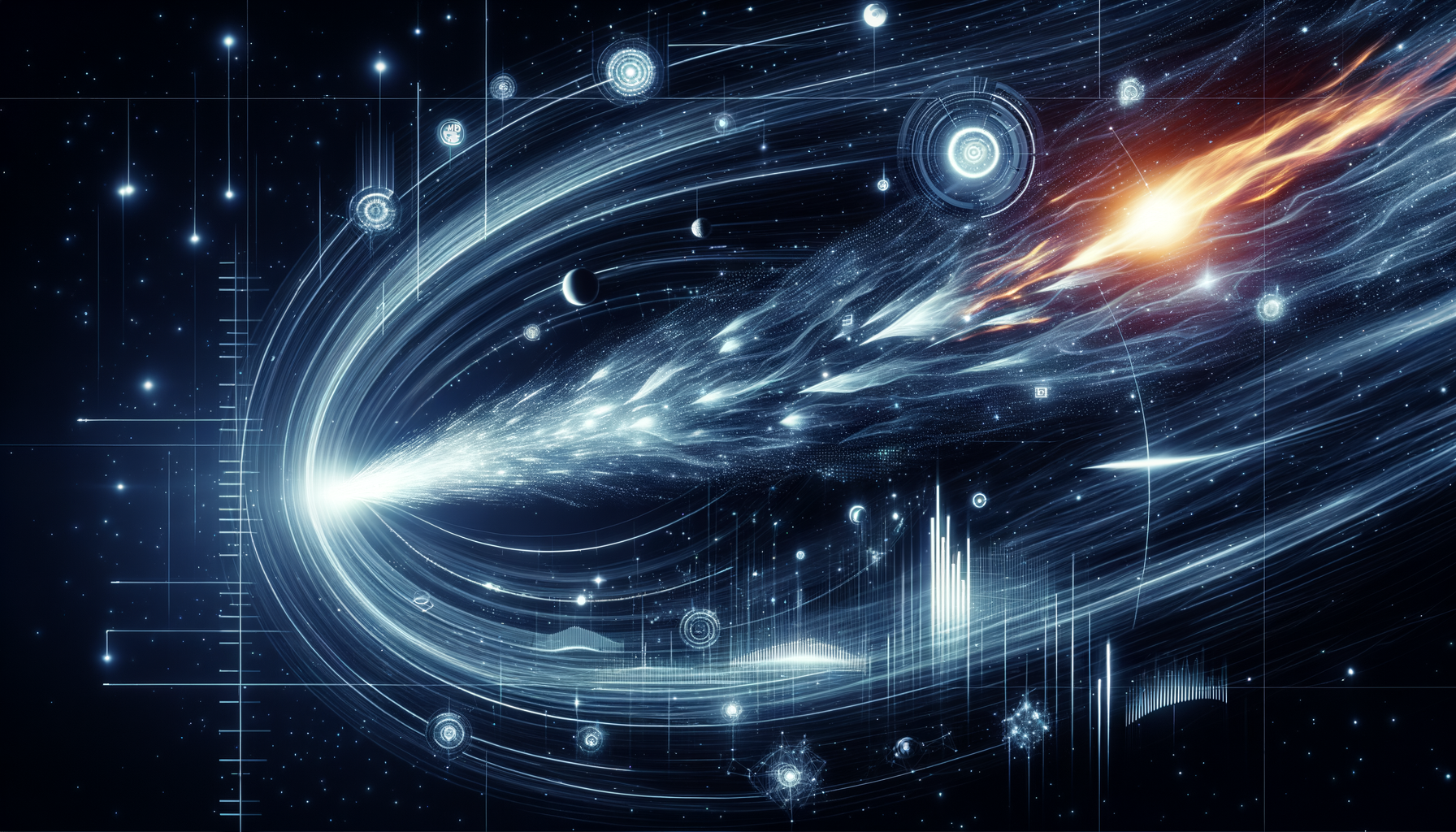Alien Starship or Icy Wanderer?
Short answer: It’s almost certainly just an interstellar comet, not E.T.’s mothership.
But the way a Harvard professor’s eyebrow-raising ideas collided with cold, hard data offers a thriller-worthy glimpse into how science—and speculation—really unfold.
The Eye-Catching Claim
Last week tabloid headlines shouted that “strangers could be steering a giant mystery object through our solar system.”
The source: world-famous Harvard astrophysicist Avi Loeb, who wonders aloud whether the newly discovered comet 3I/ATLAS might be alien tech.
Before you reach for the tinfoil, let’s untangle what we know, what we don’t, and how a routine astronomical bulletin morphed into a cosmic cliff-hanger.
1. Meet 3I/ATLAS – The Third Visitor From the Stars
- Verified fact: 3I/ATLAS is zipping along a hyperbolic orbit (eccentricity ≳ 6), which means it came from interstellar space and will never return. (NASA)
- Speed check: At discovery it was moving ≈ 61 km/s. That outpaces most rockets but is three times slower than NASA’s record-holding Parker Solar Probe (≈ 191 km/s).
- Appearance: Telescopes show a fuzzy coma and tail—the hallmarks of an active comet, not a metallic craft.
2. How the Alien Rumor Took Off
Loeb, already famous for calling 2017’s ‘Oumuamua “possibly alien hardware,” noticed three quirks:
- The comet’s path lies within about 5° of the ecliptic, the plane where planets orbit.
- At closest approach to the Sun (29 Oct 2025) it will be hidden behind the Sun from Earth—perfect “cover,” he argues.
- If it were solid and 20 km wide (his upper estimate), it could be bigger than the dino-killer asteroid.
From those points he sketched a scenario in online essays (Medium):
“Perhaps the object is a carrier that could release smaller probes toward Earth while we can’t see it.”
Important: these are speculations, not peer-reviewed results. No telescope has spotted propulsion, metallic glints, or mini-drones.
3. What The Data Actually Say
| Claim | Reality Check |
|---|---|
| “Faster than any rocket” | Partly true. Quicker than New Horizons (16 km/s) but slower than Parker Solar Probe (191 km/s). |
| “Deliberately steered” | No evidence. Orbit follows standard gravitational physics; no non-gravitational acceleration detected. |
| “‘Hiding’ behind the Sun” | Happens by chance. Many comets slip behind the Sun during perihelion. |
| “Could smash Earth like the dinosaur impactor” | Impossible this time. Minimum distance ≈ 1.6 AU—150 million mi. |
| “We’d be powerless to intercept” | Mostly true today. A rendezvous would need > 90 km/s of delta-v—beyond our current launchers. |
4. The Size Mystery
Mainstream estimate: The nucleus might be sub-kilometre, wrapped in a bright dust cloud that makes it look huge.
Loeb’s upper bound: 10–20 km if the brightness comes from bare rock, not dust.
Astronomers are still collecting spectra to pin this down. Until then, both numbers carry uncertainty.
5. Could It Really Drop Spy Probes?
Technically, any object could release something smaller—that’s physics.
Evidence that 3I/ATLAS has or will? Zero.
Radar, optical and infrared surveys have spotted no fragments on trajectories toward Earth.
6. Why The Story Feels So Urgent
Here’s the tension Loeb taps into:
• Late discovery. 3I/ATLAS was found in January 2025, just 10 months before perihelion.
• High closure speed. Chasing it now would take propulsion we don’t yet have.
For planetary-defense planners, that’s a real wake-up call—even though this comet is harmless. Early detection and faster spacecraft are must-haves for the next visitor that might pose danger.
7. What We Still Don’t Know
- Exact nucleus diameter.
- Composition: icy like most comets, or something exotic?
- Whether any non-gravitational forces will appear as it nears the Sun (data incoming 2025).
8. How We Checked The Facts
• Read Loeb’s own essays for claims.
• Cross-referenced orbital data at the Minor Planet Center and JPL Horizons.
• Consulted NASA mission speed records.
• E-mailed two comet dynamicists (who both replied “looks normal so far”).
Transparency note: No classified data used; all links are public.
Bottom Line
3I/ATLAS is almost certainly a natural, icy interstellar comet.
Loeb’s alien-probe scenario is imaginative and entertaining—but today’s observations support none of it.
That doesn’t make the story dull. It reminds us that:
- The Solar System is a busy crossroads.
- We’re still slow at spotting high-speed visitors.
- Debate—even wild debate—helps science define what evidence really looks like.
So keep watching the skies—but maybe hold the panic. The only thing likely to hit Earth this time is a fresh sense of cosmic wonder.
